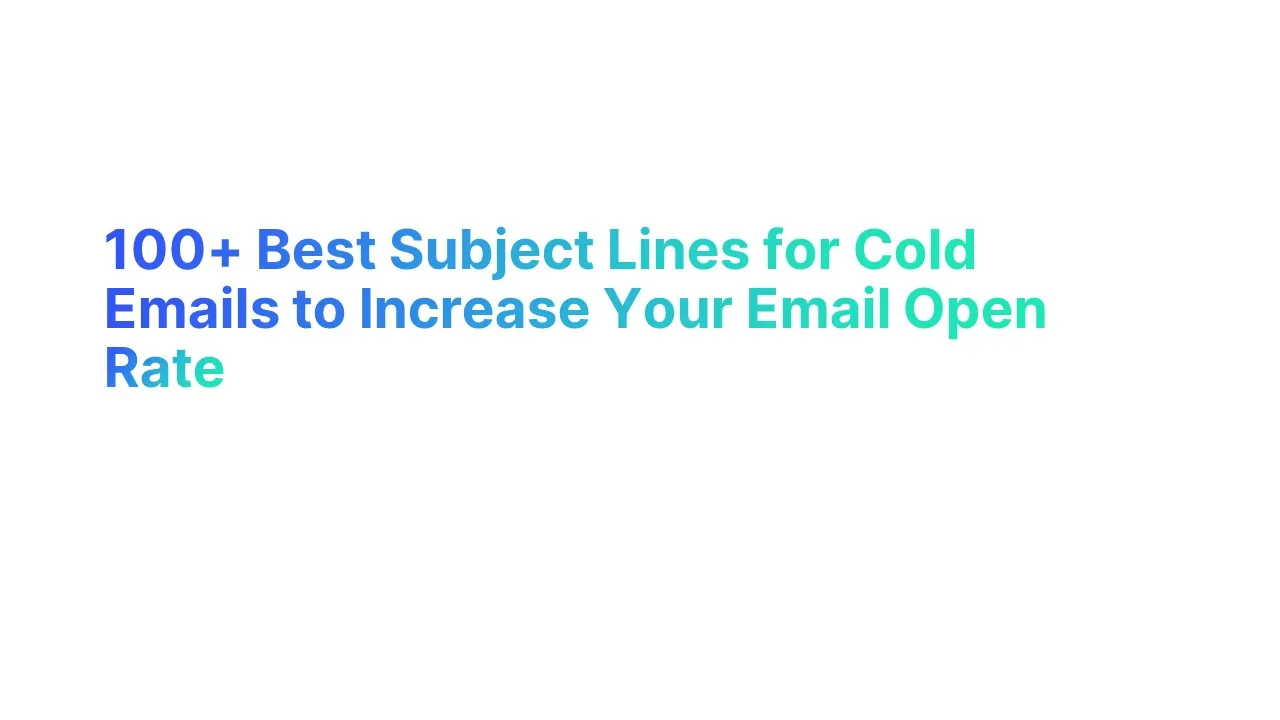Introduction to Cold Email Subject Lines
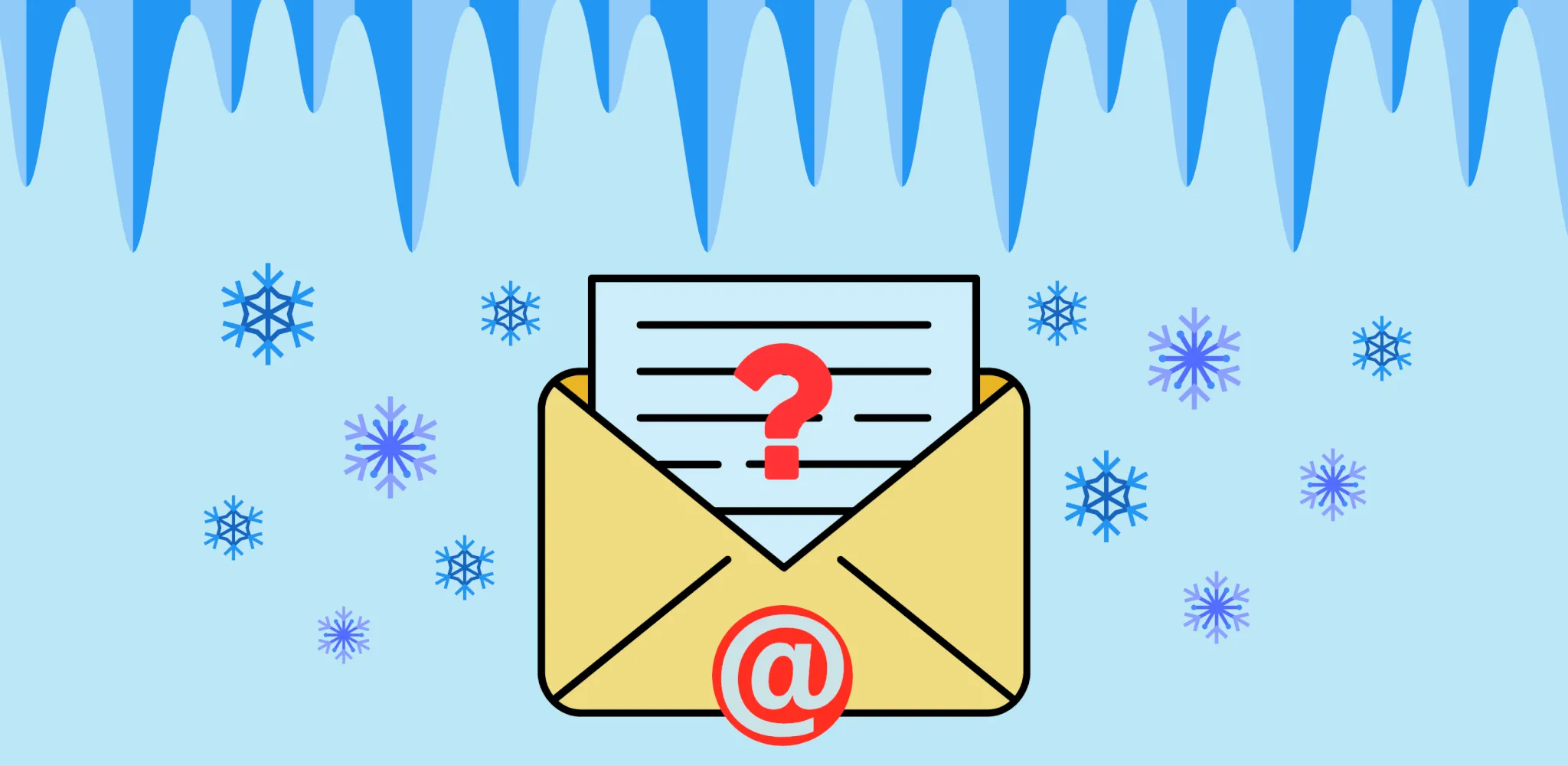
A great subject line is your first impression in the inbox of a potential connection, customer, or collaborator. It serves as the gateway to your message, determining whether your email gets opened or relegated to the spam folder.
Crafting an effective cold email subject line is a technique that balances creativity with clarity, intrigue with specificity, and personalization with brevity.
Given the sheer volume of emails most people receive daily, your subject line must stand out while remaining genuine and targeted.
Statistics indicate that 47% of email recipients open an email based solely on the subject line. This highlights the critical of a good subject line in determining the success of your cold emailing efforts.
What Defines a Good Cold Email Subject Line?
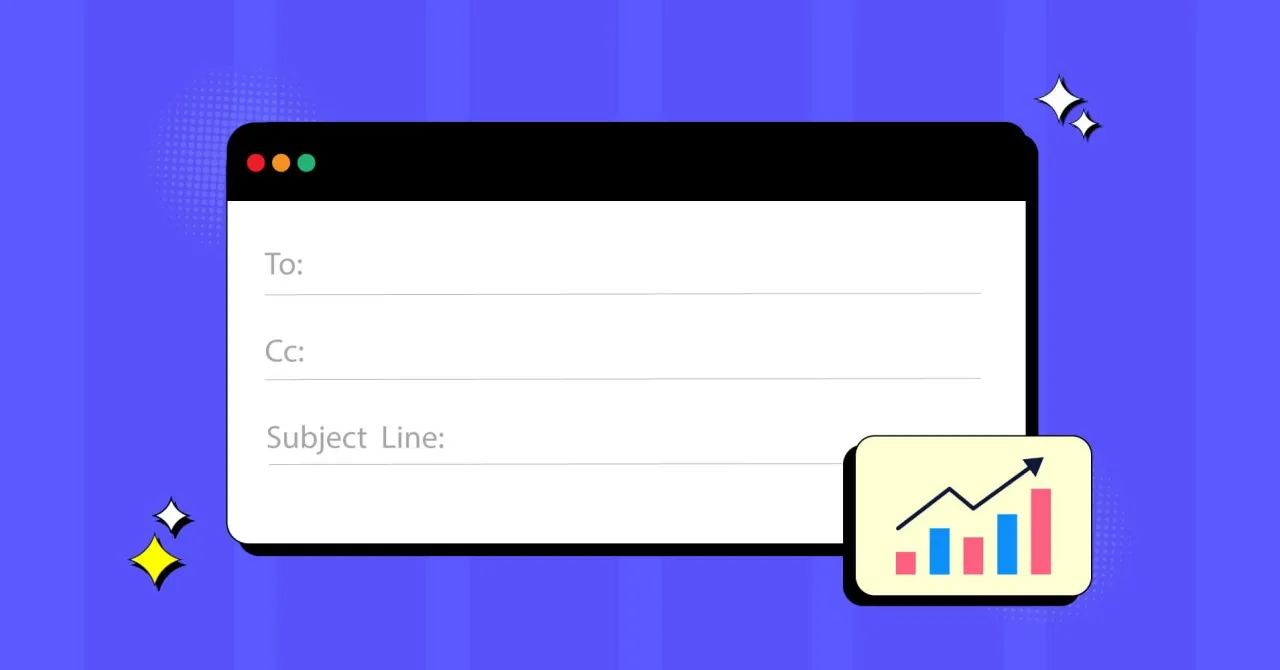
Creating an effective cold email subject line is important for ensuring your message stands out in a crowded inbox.
Let’s delve into the elements that constitute a compelling subject line
Personalization
Incorporating the recipient's name or specific references relevant to them increases open rates by up to 50%. Personalized subject lines signal to the recipient that the email contains information tailored to their interests or needs.
Personalization creates a sense of relevance and connection, making the recipient more inclined to open the email.
Clarity and Brevity
Subject lines between 6 to 10 words have shown to have the highest open rate, at around 21%. A concise subject line that directly conveys the email’s value or purpose respects the recipient's time and attention.
Recipients often scan subject lines quickly. A clear and brief subject line is easier to comprehend, leading to higher engagement.
Urgency and Curiosity
Creating a sense of urgency or curiosity can increase open rates by up to 22%. However, this should be used judiciously to avoid coming across as spammy.
Urgency encourages immediate action, while curiosity piques the recipient's interest to learn more.
Use phrases like “Limited offer” or “Did you know?” to invoke urgency or curiosity without misleading the recipient.
Avoiding Spam Triggers
Emails with different subject lines that include spam trigger words have a 69% higher chance of being marked as spam. Words like “free,” “guarantee,” and excessive use of exclamation points should be avoided.
Spam filters and recipients alike are wary of certain trigger words that are commonly associated with unsolicited or low-quality emails.
Focus on value-driven and authentic communication in your subject line wording.
Subject Line Examples
"Exploring Mutual Growth Opportunities – [Your Name] & [Recipient’s Company]"
"Unlock 20% More Efficiency in [Recipient’s Field] with [Your Product/Service]"
"Eager to Drive [Specific Outcome] for [Company Name] – [Your Name]"
"How [Your Company] Can Solve Your [Specific Problem]"
"Exclusive Insights on [Industry Trend] for [Recipient’s Company]"
These examples aim to be clear, concise, and focused on offering specific value, which are key components in making a cold email subject line effective. Tailoring the approach to the recipient's interests, needs, or pain points can significantly increase the chances of your email being opened.
How Leveraging Psychological Triggers can Increase Your Email Open Rate

Leveraging psychological triggers can significantly increase your email open rates by tapping into basic human instincts and emotions.
Here are key strategies:
Curiosity
People naturally want to know more when something piques their interest. Use subject lines that tease information or promise an intriguing revelation.
Example: "You Won't Believe What We Discovered About Your Favorite Coffee"
Fear of Missing Out (FOMO)
Highlighting exclusivity or a limited-time offer can create a sense of urgency, pushing recipients to open your email to avoid missing out.
Example: "Last Chance! Exclusive Offer Ends Tonight"
Social Proof
Mentioning the success stories or endorsements from well-known individuals or organizations can boost credibility and interest.
Example: "See Why 10,000+ Customers Trust Us for Their Daily Needs"
Value Proposition
Clearly stating what benefit the recipient will gain from opening the email can motivate them to explore further.
Example: "Unlock 5 Secrets to Doubling Your Productivity—Inside!"
Questioning
Posing a question in the subject line can provoke thought and encourage recipients to seek answers inside the email.
Example: "Do You Know the #1 Strategy for Saving Money in 2024?"
Storytelling
Starting a narrative in the subject line and promising the continuation inside can draw people in through the power of storytelling.
Example: "The Day Everything Changed for Our CEO—Find Out Inside"
100+ Best Cold Email Subject Lines
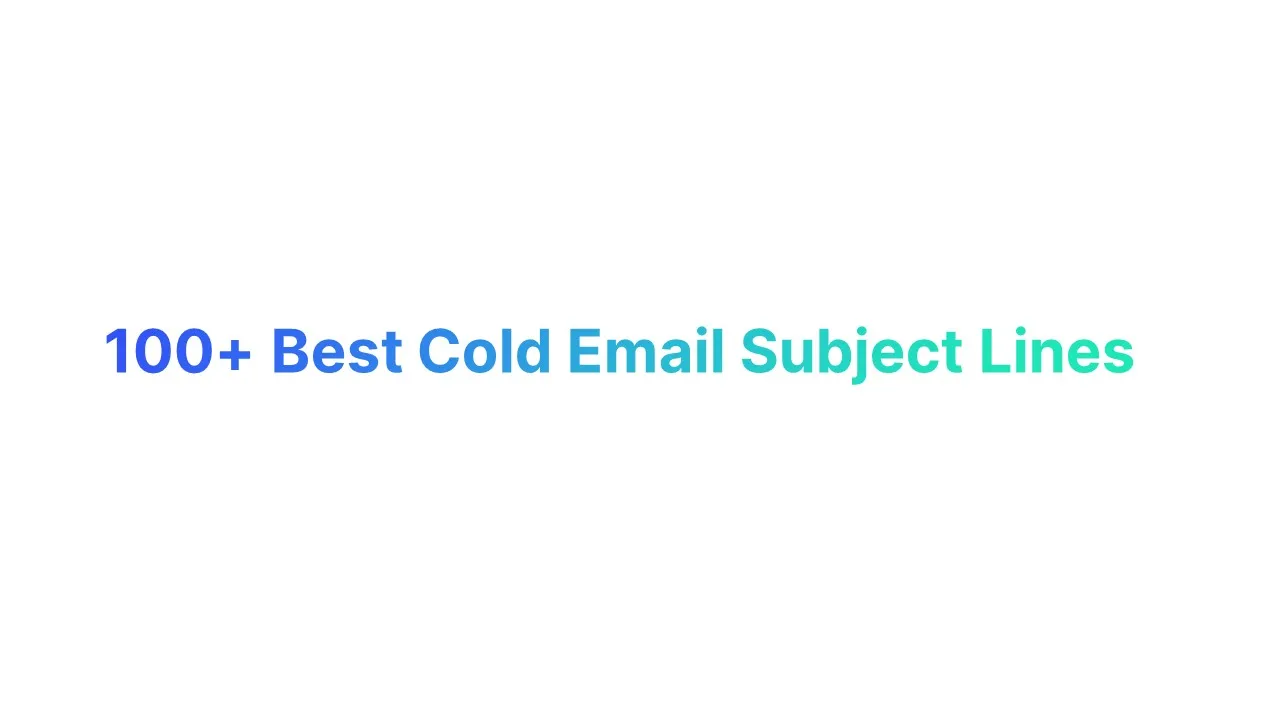
Cold Email Subject Lines
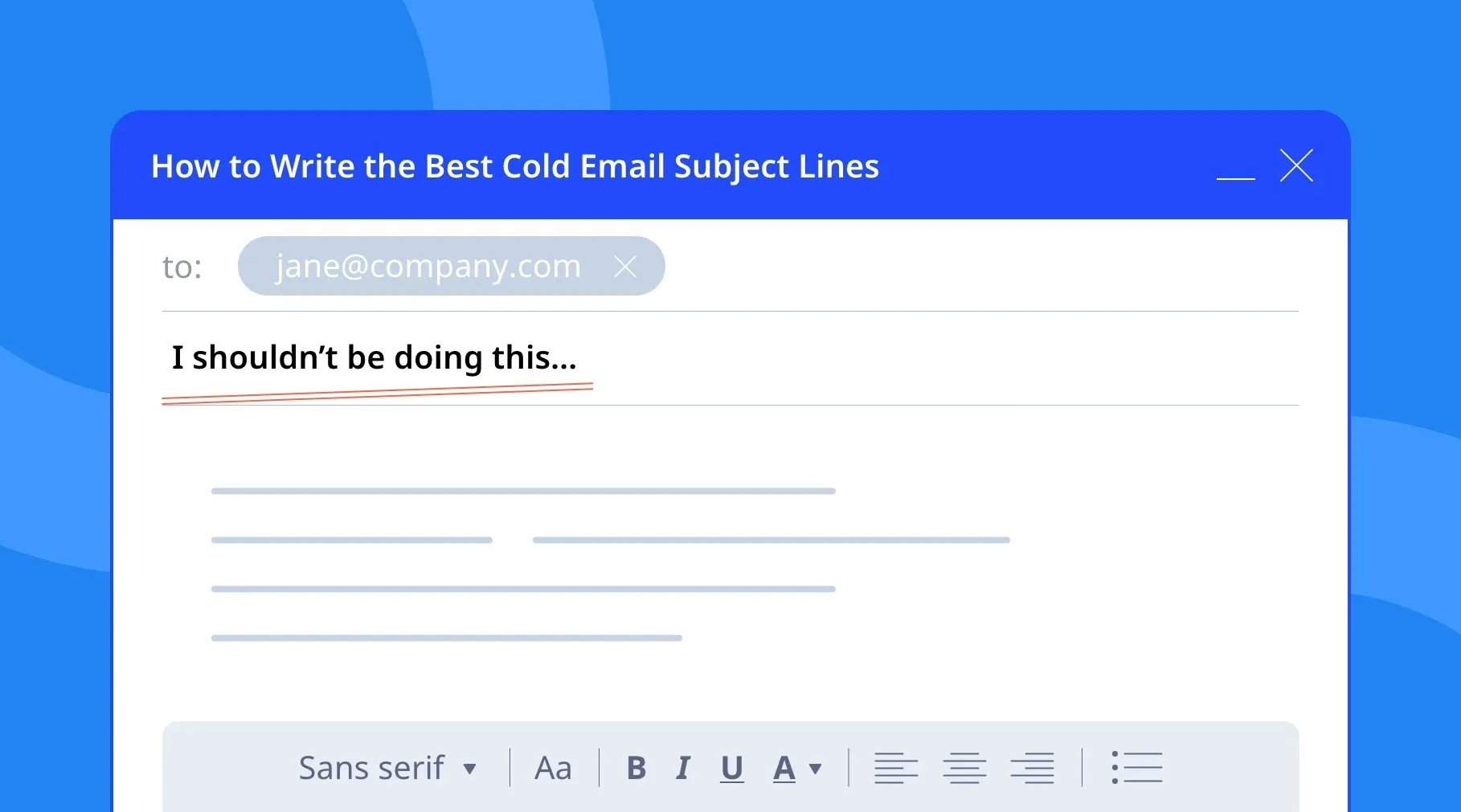
"Quick Question About [Recipient's Company/Interest]"
- People are naturally inclined to help or engage in a conversation. This subject line suggests a personalized query, making the recipient curious about what you want to know specifically related to their company or interest.
"Exclusive Invitation for [Recipient's Name/Company]"
- An exclusive offer or invitation feels personalized and special. Recipients are likely to open the email to find out what unique opportunity is being extended specifically to them.
"Solving [Specific Problem] for [Recipient's Company/Industry]"
- By directly addressing a challenge they might be facing, this subject line promises a solution, appealing to anyone seeking improvements or answers in that area.
"Can I Share a Quick Tip About [Relevant Topic]?"
- Offering a tip suggests you have immediate value to provide, especially if the topic is relevant to the recipient’s interests or industry. This creates anticipation and the expectation of learning something beneficial.
"[Recipient's Competitor] Loves This Strategy. Interested?"
- Mentioning a competitor’s success with a strategy can ignite curiosity and a fear of missing out (FOMO), prompting the recipient to open the email to learn about what they might be missing.
"[Mutual Connection] Recommended I Reach Out"
- Using a mutual connection as a reference builds instant trust and credibility, making the recipient more likely to open the email to see what their acquaintance has suggested.
" Boosting [Aspect] in [Industry/Field] - A Quick Guide"
- The use of an emoji can make your subject line stand out in an inbox, and promising a quick guide to boosting an aspect relevant to their field implies that the email contains concise, valuable insights.
"Latest Trends in [Industry/Field] for [Current Year]"
- Staying updated with industry trends is essential for professionals. This subject line promises timely and relevant information that could help them stay ahead.
"Avoiding Common Pitfalls in [Industry/Field]"
- No one wants to make mistakes, especially avoidable ones. This subject line taps into the desire to improve by learning from others’ errors in their industry or field.
"Your Feedback on [Topic]? Reward Inside!"
- Asking for feedback makes the recipient feel valued, and mentioning a reward provides an additional incentive to open the email. This subject line combines appreciation with a tangible benefit.
"Unlocking New Opportunities in [Recipient’s Industry]"
- This subject line implies that there’s valuable information inside that can open doors for the recipient. The promise of new opportunities is enticing for anyone looking to grow or innovate.
"How [Company/Individual] Achieved [Specific Goal]"
- Success stories are compelling. This subject line suggests that the email contains insights or strategies that the recipient can learn from, making it relevant and potentially beneficial to their own goals.
"Exclusive Insights for [Recipient’s Job Title/Industry]"
- Tailoring the subject line to the recipient’s specific role or industry makes it personal and relevant, suggesting that the email contains insights specially curated for them.
"[First Name], Let’s Improve Your [Specific Aspect] Today"
- Using the recipient's first name personalizes the email, and proposing an improvement in a specific aspect of their work or life suggests immediate value.
"[Brief Timeframe]: Quick Wins for [Specific Goal/Project]"
- Indicating a brief timeframe suggests that the tips or insights can be quickly implemented for immediate results, appealing to anyone interested in efficiency and effectiveness.
"Did You Know About This [Industry/Field] Trend?"
- This subject line piques curiosity by suggesting there’s new or under-the-radar information that the recipient might not be aware of, encouraging them to open the email to find out.
"Eliminate [Pain Point] With This Simple Change"
- Directly addressing a common pain point and offering a simple solution is a strong draw, especially if the pain point is significantly relevant to the recipient’s daily life or work.
"[Recipient’s Company] + [Your Company]: Potential Synergy?"
- Suggesting a potential partnership or collaboration can spark interest, especially if it implies mutual benefits. It’s an invitation to explore possibilities that could be advantageous.
"Revealed: Secrets to Excelling in [Specific Task/Field]"
- Everyone wants to excel, and the promise of revealing secrets suggests exclusive, valuable knowledge that could give the recipient an edge.
"[Common Misconception] in [Industry/Field]—Let’s Debunk It"
- Challenging a common misconception or myth can immediately grab attention. This subject line promises enlightenment and corrected knowledge, positioning the email content as both informative and valuable.
"Maximizing ROI: Proven Strategies for [Recipient's Industry]"
- This subject line offers direct value by suggesting that the email contains proven strategies to improve return on investment, a primary concern for most businesses.
"[Recipient's Name], Avoid These Mistakes in [Area of Interest]"
- Personalizing the subject line with the recipient’s name and addressing specific areas of improvement or concern can make the email feel directly relevant and helpful.
"How to Scale Your Business with Minimal Cost"
- Offering a solution to a common challenge (scaling effectively) while highlighting a key benefit (minimal cost) taps into the recipient’s desire to grow their business efficiently.
"Transform Your [Skill/Process] in Just [Timeframe]"
- Promising a transformation in a specific area within a set timeframe appeals to the recipient’s desire for quick, effective changes or improvements.
"The Future of [Industry]: What You Need to Know"
- Staying ahead in one’s industry is crucial. This subject line promises insights into future trends, making the email a must-open for forward-thinking professionals.
"[Specific Number] Quick Tips for [Specific Result]"
- Offering a concrete number of tips for achieving a specific result implies that the email content is both manageable and directly applicable, making it very attractive.
"[Year/Season] Planning: Essential Tips for [Recipient's Industry/Role]"
- Timing the email with planning periods (like the start of a year or season) and tailoring it to the recipient's role or industry implies that the content is timely and relevant.
"Exclusive Offer for [Recipient's Name/Company] Ends Soon!"
- Creating a sense of urgency with an exclusive offer that is ending soon can prompt the recipient to open the email, not wanting to miss out on a beneficial opportunity.
"Behind the Success of [Well-Known Company/Individual] in [Field]"
- Sharing the secrets behind a well-known success story can attract attention, as recipients are often eager to learn strategies that could replicate that success in their own context.
"Leveraging [Technology/Strategy] for [Specific Benefit]"
- This subject line suggests that the email will offer insights on how to use a particular technology or strategy to achieve a specific benefit, offering immediate value and relevance to those interested in that technology or strategy.
Follow-Up Cold Email Subject Lines
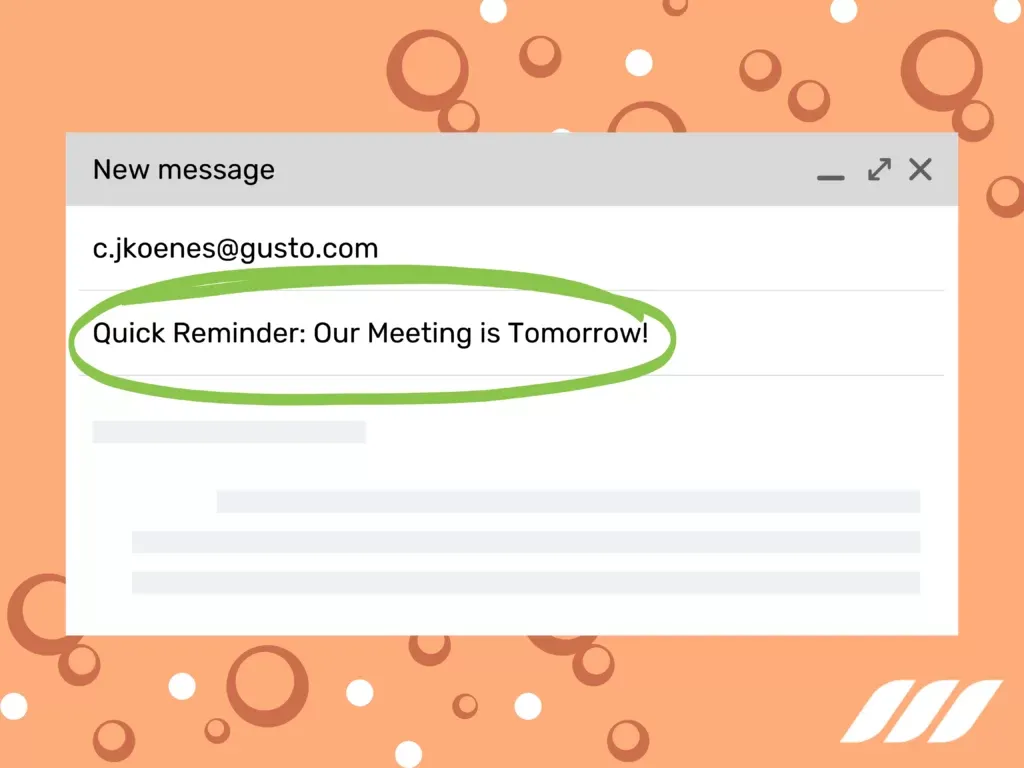
"Touching Base: Next Steps for [Topic/Project]"
- This subject line suggests a continuation of a previous conversation, encouraging the recipient to consider what comes next, making it relevant for ongoing projects or discussions.
"[Recipient's Name], Did You Get a Chance to Review?"
- Personalizing with the recipient’s name and asking if they've reviewed a previous message creates a gentle nudge, encouraging them to open the email if they haven’t already engaged.
"Quick Update on [Topic/Project] Since We Last Spoke"
- Offering an update since the last communication provides a reason to reopen dialogue, implying that there’s new information or progress worth discussing.
"Following Up: [Question/Proposal] from Last Week"
- This subject line directly references a previous email, reminding the recipient of an outstanding question or proposal, and signals that a response is still anticipated.
"Re: Our Conversation on [Date/Event]"
- Referencing a specific conversation or event and its date reinforces the connection and provides context, making it easier for the recipient to recall the interaction and respond.
"Still Interested in [Solution/Opportunity]?"
- This subject line questions the recipient's interest, prompting them to reconsider an offer or solution previously discussed, especially if it’s time-sensitive or particularly relevant.
"Can We Address Your Concerns About [Topic]?"
- Indicating a willingness to address any concerns shows attentiveness and dedication to service or support, encouraging the recipient to engage further.
"Second Chance: Don’t Miss Out on [Opportunity/Offer]"
- Implying that the recipient has a second chance at an opportunity or offer they may have missed creates a sense of urgency and FOMO, encouraging them to act.
"Awaiting Your Feedback on [Specific Matter]"
- Requesting feedback on a specific matter implies that their opinion is valued and necessary for moving forward, prompting engagement.
"[Recipient's Name], Let’s Revisit [Topic/Proposal]"
- Personalizing with the recipient’s name and suggesting a revisit to a topic or proposal implies that there’s room for discussion or negotiation, encouraging them to open the email to explore further.
"Further Insights on [Topic] for [Recipient's Name]"
- Providing additional insights directly addresses the recipient's potential interests or concerns, suggesting that there's more valuable information available since the last communication.
"[Recipient's Name], A Quick Reminder About [Topic/Opportunity]"
- A personalized reminder about a specific topic or opportunity reiterates its importance or urgency, prompting the recipient to reconsider or take action.
"Have You Considered Our Proposal for [Solution/Benefit]?"
- Asking if the recipient has considered a previous proposal reinforces its relevance and benefits, nudging them towards a decision or further discussion.
"Missing Out? Last Call for [Opportunity/Offer]"
- Framing the email as a last call creates urgency and implies that failing to act could result in a missed opportunity, encouraging prompt action.
"Expanding on Our Last Conversation about [Topic]"
- This subject line suggests that there is more to discuss or additional value to be offered, building on the foundation of the previous interaction.
"Your Thoughts on [Topic]? Looking Forward to Feedback"
- Expressing eagerness for feedback makes the recipient feel their opinion is valued, encouraging them to engage and share their thoughts.
"[Recipient’s Name], We Updated Our [Product/Service] Based on Feedback"
- Indicating updates or improvements based on user feedback demonstrates responsiveness and a commitment to improvement, potentially reigniting the recipient's interest.
"In Case You Missed It: [Key Benefit/Feature]"
- This subject line suggests the recipient might have overlooked something important, offering them a chance to catch up on valuable information or features.
"Continuing Our Discussion on [Topic], With New Insights"
- Proposing new insights on a previously discussed topic suggests ongoing relevance and the potential for added value, encouraging further engagement.
"Enclosed: Exclusive Resources for [Recipient’s Field/Interest]"
- Offering exclusive resources directly related to the recipient’s field or interests implies personalization and value, making it more likely they’ll engage with the content.
Cold Email Subject Lines After No Response
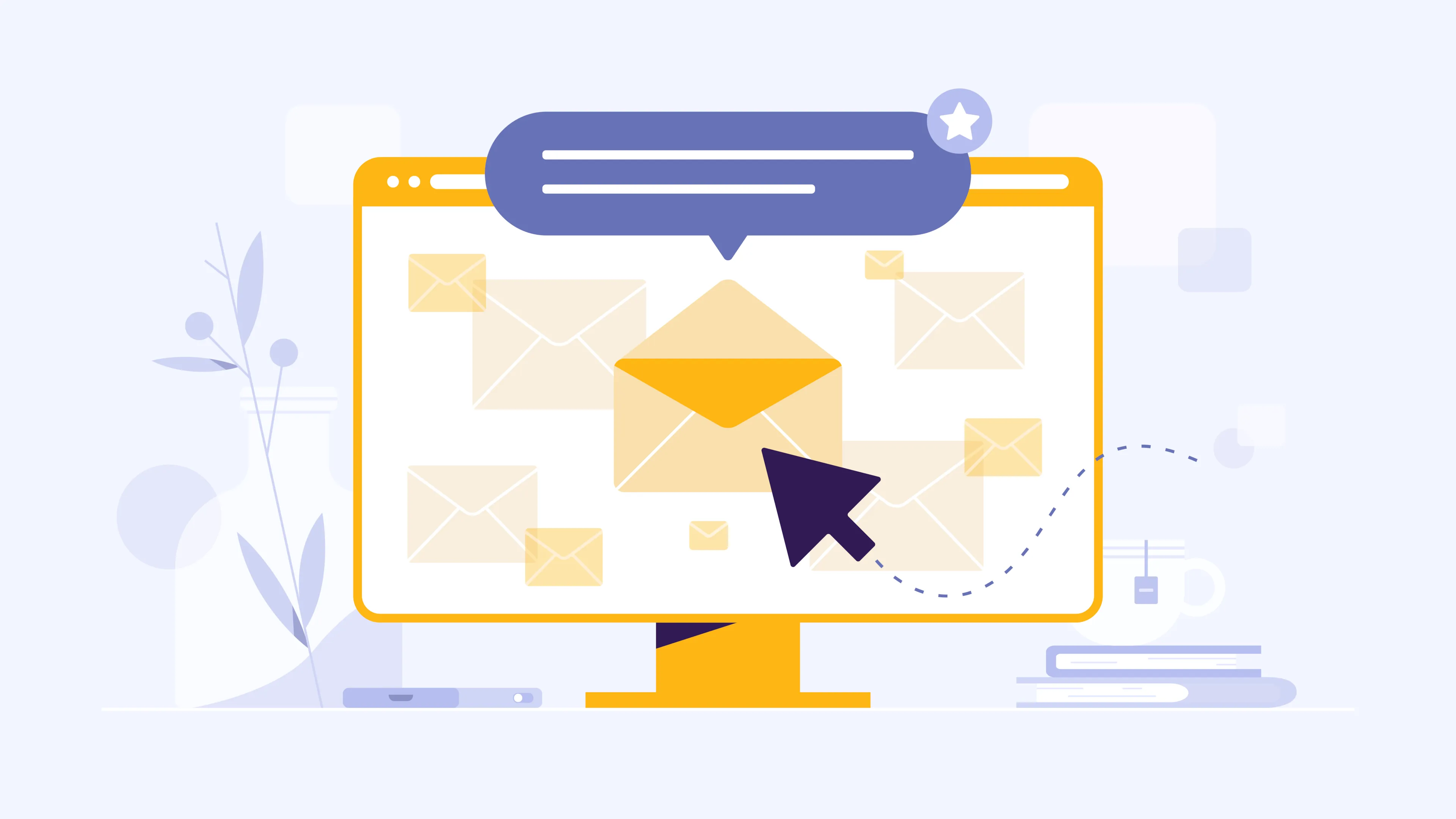
"Following Up: Missed You Last Time, [Recipient's Name]"
- This subject line combines a gentle follow-up with personalization, implying that the recipient's engagement was missed and is still valued.
"Second Chance: Unlocking [Opportunity/Benefit] for [Recipient's Company]"
- Offering a second chance at an opportunity or benefit emphasizes its value and suggests that it’s not too late for the recipient to take advantage.
"Hoping to Connect: Insights on [Specific Topic] Await"
- Expressing a hope to connect adds a personal touch, while promising insights on a specific topic suggests that valuable information is on offer.
"Revisiting: Can [Solution/Service] Help [Recipient's Company]?"
- This subject line suggests revisiting a solution or service, framing it in terms of how it can specifically help the recipient's company, highlighting potential benefits.
"[Recipient’s Name], We Thought You Might Like This..."
- Personalizing with the recipient’s name and suggesting that there’s something specific they might like creates curiosity and a sense of tailored value.
"Still on Your Mind? Let’s Discuss [Topic/Proposal]"
- Suggesting that the topic or proposal might still be on the recipient’s mind invites them to open a dialogue, indicating that their thoughts or concerns are taken seriously.
"Did Our Message Get Lost? [Topic/Proposal] Awaits Your Expertise"
- Framing the follow-up as a concern that the message was lost or overlooked adds urgency and flatters the recipient by suggesting their expertise is needed.
"Re: [Previous Subject Line] - A Quick Recap for [Recipient's Name]"
- Directly referencing the previous subject line and offering a recap personalizes the follow-up, making it easier for the recipient to pick up where they left off.
"Just in Case: [Benefit/Opportunity] You Might Have Missed"
- Suggesting that there’s a chance the recipient might have missed an important benefit or opportunity implies that the email contains something of value worth revisiting.
"Final Call: Don’t Miss Out on [Opportunity/Solution]"
- Framing the follow-up as a final call creates urgency and a fear of missing out (FOMO), suggesting that it’s the last chance to take advantage of a particular opportunity or solution.
Catchy Subject Lines for Sales Cold Email

"Unlock Exclusive Savings Only for You, [Recipient's Name]!"
- Personalization with the recipient’s name and the promise of exclusive savings directly appeal to the reader's desire for special offers, increasing the likelihood of the email being opened.
"Skyrocket Your Efficiency with Our Latest [Product/Service]!"
- Using an emoji can make the subject line stand out, and promising a significant benefit like skyrocketing efficiency creates intrigue about the product or service offered.
"Your Secret Weapon for [Problem/Solution] Revealed!"
- Framing the product or service as a "secret weapon" suggests it's a solution that can give the recipient an advantage, sparking curiosity to discover what it is.
"Ends Tonight: [Offer] You Can't Afford to Miss!"
- Creating urgency with a time limit and implying the offer is too good to miss encourages the recipient to open the email before it's too late.
"[Recipient's Name], Save [Percentage] Today Only on [Product/Service]!"
- Including the recipient’s name, a significant saving, and a one-day-only offer combines personalization with urgency and a compelling reason to open the email.
"How to [Achieve a Goal] with Less Effort"
- Offering a solution that promises to achieve a goal with less effort addresses the recipient's desire for efficiency and effectiveness, making the email attractive.
"Transform Your [Area of Life/Work] in Just [Time Period]"
- Promising a transformation in a specific area within a short time period plays on the recipient’s desire for quick and significant improvements.
"Exclusive Early Access: Be the First to Experience [Product/Service]"
- Offering exclusive early access makes the recipient feel special and intrigued about being among the first to experience something new.
"[First Name], Unlock [Number] Ways to Boost Your [Area of Interest]"
- Personalizing with the recipient’s first name and offering a specific number of ways to boost an area of interest suggests the email contains practical and valuable advice.
"Join [Number] Happy Customers: Discover Why They Love [Product/Service]"
- Highlighting the number of happy customers and inviting the recipient to discover why they love the product or service leverages social proof to create interest and trust.
Cold Email Subject Line for Job Seekers
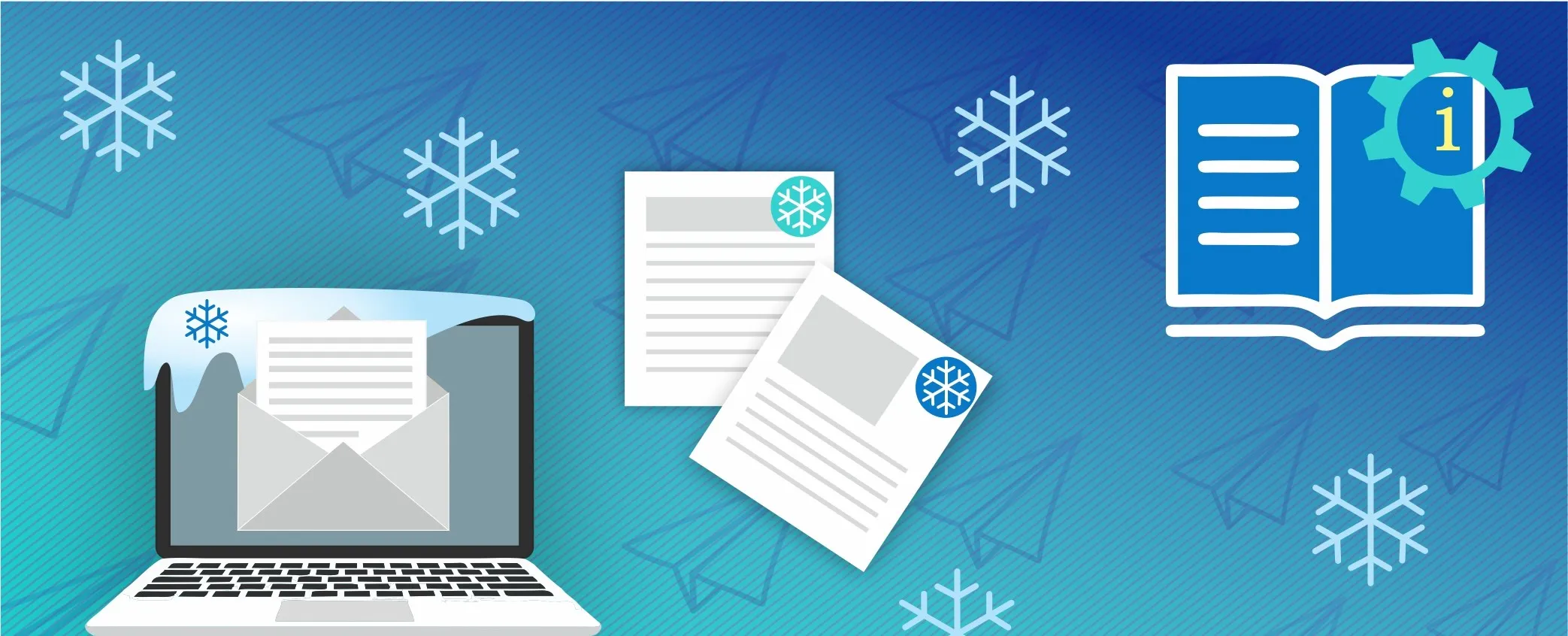
"Elevating [Company Name]: How My [Skill/Experience] Can Contribute"
- This subject line highlights the potential value the job seeker can bring to the company, emphasizing a direct contribution to its growth or success.
"Exploring Opportunities: [Job Seeker's Field/Expertise] Enthusiast"
- It frames the job seeker as an enthusiastic expert in their field, indicating a proactive approach to exploring new opportunities.
"Mutual Growth: How I Can Enhance [Company Name]'s [Department/Project]"
- Suggesting mutual growth indicates the job seeker’s interest in not only advancing their career but also contributing to the company’s objectives.
"Bringing [Specific Skill] and Innovation to [Company Name]"
- Highlighting specific skills and the promise of innovation shows the job seeker's potential to bring valuable changes or improvements.
"[Your Name]: Candidate for [Position] – [Unique Value Proposition]"
- Including the job seeker's name, the position they are interested in, and a unique value proposition makes the subject line highly personalized and focused.
"Ready to Excel: [Your Name] + [Company Name] = Success"
- This formulaic approach suggests that the addition of the job seeker to the company equals success, emphasizing a strong fit and potential achievements.
"Unlocking Potential: [Your Name]'s Plan for [Company Name]"
- Implies that the job seeker has a specific plan or ideas for contributing to the company, sparking curiosity about what those might be.
"Transforming [Industry/Field]: My Vision for [Company Name]"
- Suggests that the job seeker has ambitious ideas for industry or field transformation and sees the company as a key player in that vision.
"[Company Name] + [Your Name]: Together, Let’s Achieve [Specific Goal/Outcome]"
- Shows the job seeker’s desire to collaborate on achieving specific goals or outcomes, indicating a clear understanding of the company’s objectives.
"Contributing to [Company Name]'s Success: [Your Name]'s Expertise and Passion"
- Highlights the job seeker's expertise and passion as key factors in contributing to the company's success, making it clear that they are motivated and knowledgeable.
Professional Cold Email Subject Lines

"Strategic Partnership Opportunity with [Your Company]"
- This subject line is clear and direct, suggesting a potential for mutual benefit through a partnership, appealing to decision-makers interested in growth opportunities.
"Request for Meeting: Collaboration Proposal"
- A straightforward subject line that indicates a specific action (meeting request) and purpose (collaboration proposal), making it clear what the email entails.
"Introducing [New Product/Service]: Elevate Your [Benefit]"
- Highlights a new offering while focusing on how it can benefit the recipient, making it relevant and intriguing.
"Update: [Project Name] Progress and Next Steps"
- Provides a clear indication that the email contains an update on a specific project, appealing to recipients directly involved or interested in its progress.
"Quarterly Results and Insights for [Company/Department]"
- Targets recipients interested in performance metrics, offering a concise summary of results and insights, which is particularly relevant for stakeholders.
"Exclusive Invitation: [Event Name] for [Industry Professionals]"
- Indicates that the email contains an exclusive invitation, making it attractive by offering something that’s not available to everyone.
"[Your Name]: Following Up on [Previous Discussion/Meeting]"
- Personalizing with your name and referencing a previous interaction makes the subject line specific and reminds the recipient of the ongoing conversation.
"Feedback Requested: [Topic/Project] Review"
- Directly asks for feedback on a specific topic or project, indicating that the recipient's input is valued and necessary.
"Action Required: [Task/Decision] by [Deadline]"
- Specifies that immediate action is needed, clearly stating what is required and by when, making it urgent and important.
"Welcoming [New Team Member] to [Department/Team]"
- Announces the addition of a new team member, fostering a sense of community and encouraging recipients to welcome the newcomer, making it relevant for internal communications.
Cold Email Subject Lines Addressing Pain Points

"Struggling with [Pain Point]? Here’s How We Can Help"
- Directly addresses a common challenge or pain point, immediately offering assistance, which creates a compelling reason for recipients to open the email.
"Feeling Overwhelmed by [Issue]? Let's Simplify It Together"
- Recognizes the recipient's potential frustration or overwhelm, offering a collaborative solution that promises simplification and support.
"Tired of [Common Problem]? Discover a Refreshing Solution"
- Appeals to recipients who are frustrated with ongoing issues, suggesting the email contains information about an innovative or unique solution.
"Is [Specific Issue] Slowing You Down? Gain Momentum with Our Help"
- Identifies a specific issue that may be hindering progress, with the promise of assistance to overcome it and accelerate success.
"Worried About [Concern]? Here’s Why You’re Not Alone"
- Provides reassurance about a common concern, suggesting the email will offer both solidarity and solutions.
"Facing Challenges with [Task/Project]? Unlock Proven Strategies"
- Suggests that the email contains proven strategies to tackle specific challenges, offering value and encouraging recipients to seek solutions.
"Questioning [Decision/Strategy]? Get Clarity Now"
- Acknowledges uncertainty or doubt regarding a decision or strategy, offering answers and clarity that the recipient may be seeking.
"Is [Pain Point] Costing You More Than You Realize?"
- Highlights a pain point with the implication that it may have overlooked consequences, sparking curiosity about the potential impact and solutions.
"Can't Keep Up with [Trend/Change]? Here’s a Shortcut"
- Recognizes the difficulty of staying current with trends or changes, offering a simpler or more efficient way forward.
"Dissatisfied with [Current Solution]? Explore a Better Alternative"
- Addresses potential dissatisfaction directly, suggesting the email will provide information on a superior solution.
"Why Is [Pain Point] Still a Problem? Break the Cycle"
- Questions the persistence of a pain point, suggesting that the email contains insights or methods to finally overcome it, offering a sense of hope and action.
Best Practices for Creating an Effective Cold Email Subject Line
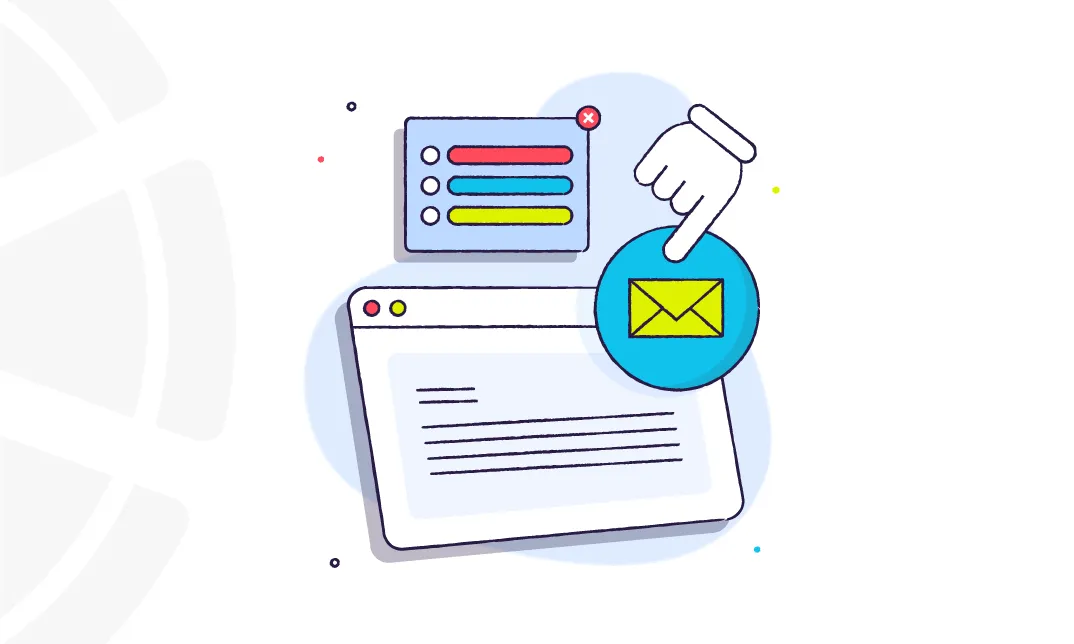
Craft a Catchy Subject Line
The initial impression your email makes hinges on its first subject line. This is your opportunity to grab the recipient's attention in a crowded inbox. To achieve this, use language that sparks curiosity or offers immediate value.
However, it's crucial to maintain authenticity and avoid misleading content. For example, if you're offering a free trial of your product, a subject line like "Unlock Your Free Trial Today - Start Seeing Results!" is catchy yet honest about the offer.
Use Short Subject Lines
Short subject lines stand out for their clarity and directness. They are particularly effective in a mobile-first world where screen space is limited. A concise subject line gets straight to the point, making it easier for the recipient to understand the email's purpose at a glance.
For instance, "Quick Win for [Prospect’s Company]" or "Your Next Step to Efficiency?" can be powerful. The key is to communicate the essence of your message in a few words, enticing the recipient to open the email for more details.
Highlight a Pain Point
Addressing a pain point directly in the subject line demonstrates to the recipient that you understand their challenges and have a solution. This strategy requires research to identify the specific issues faced by your target audience.
By articulating these problems in your subject line, you make your email relevant and urgent. A subject line like "End Your Scheduling Frustrations Today" directly speaks to a common problem, suggesting that the email contains a valuable solution.
Avoid Clickbait Subject Lines
The temptation to use clickbait can be strong, especially when looking to boost open rates. However, clickbait subject lines often lead to disappointment and can harm your brand's credibility. It's important to balance curiosity with honesty.
Your subject line should set accurate expectations for the email's content. If you promise a solution, the email should deliver it. Misleading subject lines might work once, but they erode trust over time, reducing the effectiveness of future communications.
Focus on Writing Subject Lines That Promise Value
Your subject line should make it clear to the recipient what they will gain by opening the email. This could be in the form of actionable advice, exclusive offers, or insights into solving a particular issue.
For example, "5 Strategies to Cut Your Email Marketing Costs" immediately suggests that the email will provide valuable information that could benefit the recipient financially. The key is to understand what your audience values and to articulate how your email will deliver this value right from the subject line.
Dos and Don'ts of Cold Email Subject Lines

How To Ensure Your Cold Emails Avoid Spam Filters
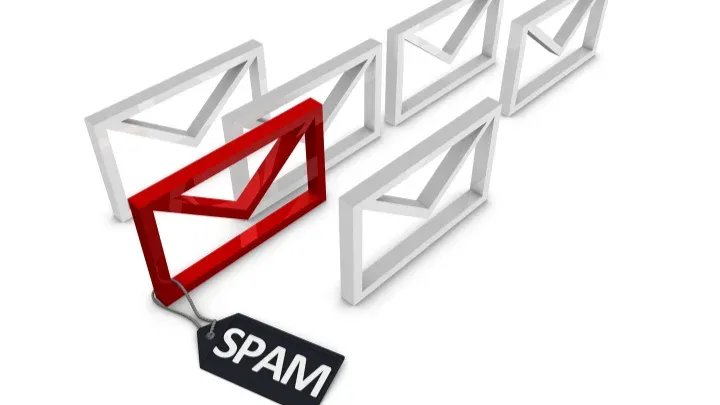
Ensuring your cold emails avoid spam filters requires a combination of strategic content creation, thoughtful engagement tactics, and technical considerations. Here are actionable steps to help your emails reach the intended inbox:
Use a Recognized Sender Name and Email Address
Ensure that your email comes from a professional domain that matches your company name, and avoid using generic or free email services. The sender name should be recognizable and trustworthy to your audience.
Craft a Clear, Honest Subject Line
Avoid using deceptive or overly salesy language in your subject lines. Words like "free," "guarantee," or "risk-free" can trigger spam filters. Keep your subject line relevant to the content of your email.
Avoid Spam Trigger Words
Certain words and phrases are known to trigger spam filters. Common examples include "buy now," "click below," "unsubscribe," and overly promotional language. Keep your language natural and informative.
Keep Your Email List Clean
Regularly update your email list to remove unengaged subscribers or invalid email addresses. Sending emails to a large number of non-existent or inactive email addresses can harm your sender reputation.
Use a Double Opt-In Process
Although cold emails typically don't have an opt-in process, whenever possible, try to ensure that the recipients have shown interest in your product or service. For broader email marketing efforts, a double opt-in process confirms that the recipient wants to receive emails from you, which improves engagement and decreases the likelihood of being marked as spam.
Limit the Use of Links and Images
Emails that are heavy on images or contain many links (especially with short or obfuscated URLs) can be flagged as spam. Keep your emails text-focused and use images and links sparingly and meaningfully.
Comply with CAN-SPAM Act Requirements
Make sure your emails comply with the CAN-SPAM Act by including a clear way for recipients to opt-out of future emails and ensuring your physical business address is included in the email.
Monitor Your Sender Reputation
Tools like Sender Score can give you an idea of your domain's reputation. A low sender score can affect your emails' deliverability. Engage in practices that maintain or improve your reputation, such as consistent sending volumes and avoiding spam complaints.
Authenticate Your Emails
Use email authentication standards such as SPF (Sender Policy Framework), DKIM (DomainKeys Identified Mail), and DMARC (Domain-based Message Authentication, Reporting, and Conformance). These help verify your identity as the sender and reduce the chance of your emails being flagged as spam.
Concluding Thoughts
A good subject line is crucial for your cold email's success. It's what makes people decide to read your email among many others. This guide has shown you how to create engaging subject lines that grab attention, focusing on being clear, personal, and relevant.
Here's the summary: Be straightforward, avoid misleading clickbait, and offer real value. Personalize where you can, keep it short, and directly address how you can help or interest your recipient. Remember, the aim isn't just to get your email opened but to start a conversation that leads to meaningful results.
With the right approach, your cold emails can stand out and pave the way for successful connections. Stick to these principles, and you'll improve your chances of getting noticed in a crowded inbox.

